Sony increasingly makes its phones for a small – but vocal – niche, and the Xperia 5 III is no different.
For those who are drawn to the unusual aspect ratio, complex camera features, and powerful display this is an excellent package – arguably even more appealing than the flagship Xperia 1 III – but like that phone it comes with serious drawbacks too. The camera in particular is only powerful if you know how to use it well, and makes for a fairly poor point-and-shoot option at the price.
The oddities mean this is a phone best suited for those willing to work at the camera or anyone who needs a small, but flagship, Android phone and is willing to pay for it. If that describes you then there’s a lot to love here.
Design and build
- Compact and light – 168g
- Tall and slim design
- IP65/68 dust and water-resistance
- Headphone jack
The first thing you’re likely to notice about the Xperia 5 III – like any recent Xperia phone – is the unusually tall, slim design.
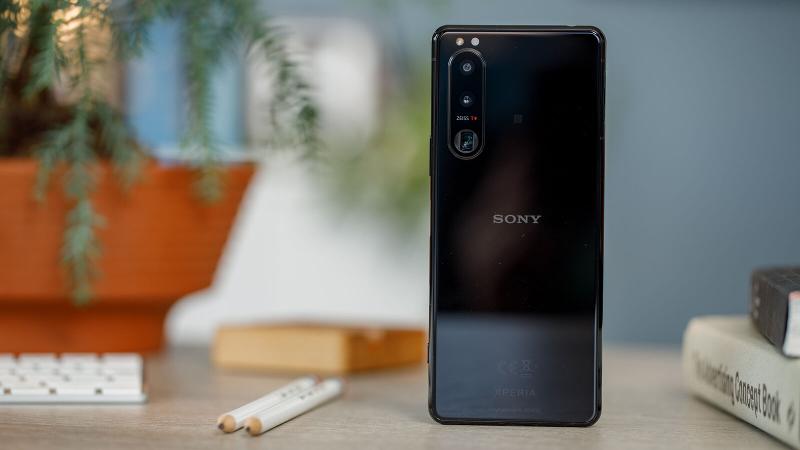
This is driven first and foremost by Sony’s preference for a 21:9 aspect ratio display – intended to be ideal for watching movies – but it holds more appeal than that alone, not least because the slim screen is much more comfortable to hold.
Combined with the fact that the 5 III is essentially a compact version of the flagship Xperia 1 III, this is one of those increasingly rare beasts: an actually small phone, and one that doesn’t compromise on specs to do it.
It helps that it’s also a premium phone, with an aluminium frame and a protective Gorilla Glass 6 coating on both the front and back. I’ve reviewed it in black, but you can also buy the phone in green and pink, depending on the country.
The slim shape isn’t the only respect in which the 5 III is an unusual phone. For one, it still has a 3.5mm headphone jack – an increasing rarity, especially in high-end devices.
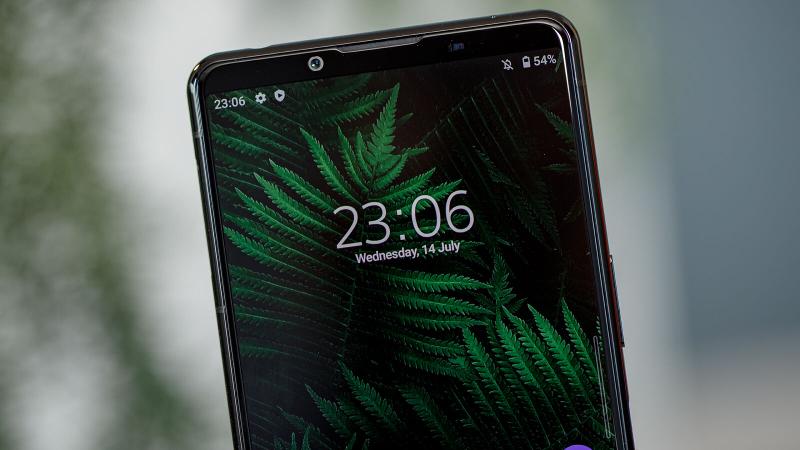
There’s the fact that instead of a notch or a pin-hole camera, Sony has kept the selfie shooter in a thick top bezel (with a chin below to match). That does give you an uninterrupted display, but adds to the elongated aesthetic and arguably feels a little less modern.
Then there are the buttons. The volume button is unremarkable, but the power button doubles as a fingerprint sensor (a frustratingly inconsistent one, I must say), and below that you get dedicated buttons for Google Assistant (which I don’t love) and the camera shutter (which I do).
Even the water-resistance here is odd – Sony uses an IP65/68 rating, which means the phone is technically rated against two different types of water damage: low-pressure jets and full immersion (in 1.5 meters for up to 30 minutes).
One final gripe before I move on: the only part of the phone that feels badly build is the SIM tray. This supports either two SIM cards or one SIM and a microSD, but the actual tray is so flimsy that I genuinely couldn’t get the dedicated SIM slot to hold my card in place, so I’d worry that anyone hoping to use both slots will actually struggle to do so. It’s simply a baffling way for a phone to go wrong in 2021.
Display and audio
- Relatively small – but tall – 6.1in display
- 120Hz OLED
- Stereo speakers
- Rubbish ‘dynamic vibration system’
Sony has done much to hype the 4K, 120Hz panel on the Xperia 1 III, and while the 5 III doesn’t quite match that resolution, on this smaller scale it doesn’t need to.
Instead, the 6.1in display here runs at 1080 x 2520, which at this size is still enough to give you a dense 449ppi pixel density. It’s still 120Hz refresh rate, so you’ll get smooth and fluid animation throughout, though you can only choose between fixed 60Hz or 120Hz modes, with no dynamic adjustment.
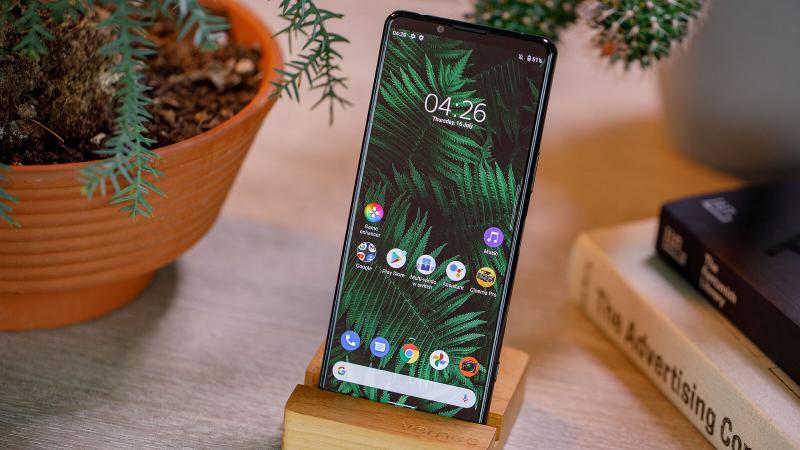
This is an OLED panel, so you can expect great colours and deep blacks, and Sony offers a choice of different colour modes – a vibrant ‘Standard’ mode, and a more natural skewing ‘Creator’ mode – along with an auto mode that decides which to apply when. Customisable white balance gives you even more versatility, along with an automatic video enhancement option – though the display as a whole is oddly dim.
I’ve already mentioned the thin 21:9 aspect ratio, but it’s worth emphasising again. This is really optimised for watching movies, which often come in that or similar aspect ratios, though other content will often end up being letter-boxed, and apps fortunately adapt well to the different shape.
The unusual shape arguably makes less sense on this smaller screen, which is in a sense not so well-suited to watching movies, but I’m a fan of it for general usage too, not least thanks to the more comfortable hand-feel.
Audio is another point where Sony excels. There’s that aforementioned headphone jack, along with stereo speakers for when you want to listen out loud.
On a software side, those are backed up by audio tech including DSEE upscaling, 360 Spatial Audio, 360 Reality Audio and Dolby Atmos support, aptX HD, and LDAC for Hi-Res audio.
Then there’s Sony’s own unusual dynamic vibration system. This uses the haptic motors to buzz the phone in time with your audio for an ‘immersive’ experience. I hate it – though fortunately you can switch it off. The buzzing phone is a distraction more than an immersion, and at times actively compromises the audio rather than improving it, so feels like a rare swing-and-a-miss from Sony.
Specs and performance
- Top-tier Snapdragon 888 5G chip
- Overheating limits top performance
- 8GB RAM and up to 256GB storage
- 5G, Wi-Fi 6, and Bluetooth 5.2
Some small phones drop their specs down to cut costs, but Sony’s approach with the 5 III is similar to Apple’s with the iPhone 13 Mini.
That means you’ll still get the flagship Qualcomm Snapdragon 888 5G chipset, here paired with 8GB of RAM and either 128GB or 256GB of storage.
Unfortunately, Sony doesn’t seem to have matched its cooling tech to the small form factor here, and the result is that the Xperia 5 III gets hot when running anything challenging – not to mention when charging – and it seems clear that this is limiting performance.
Looking at synthetic benchmarks, the phone performs well but clearly behind some other key Snapdragon 888 rivals, including the Xperia 1 III. In fact, its Geekbench 5 CPU performance is even below that of last year’s Xperia 5 II.
Benchmarks aren’t everything, and in day-to-day usage the phone still runs very smoothly, so for the average person this certainly shouldn’t be a concern. But power users and gamers might be best looking elsewhere, as for any heavy use this will run hot and start to throttle, reducing performance.
Connectivity is at least unambiguously strong. In addition to 5G you’ll find Wi-Fi 6 and Bluetooth 5.2, along with NFC of course.
Battery and charging
- Average battery life
- Average charging speeds
- No wireless charging
The Xperia 5 III has many strengths, but it must be said that the battery is not one of them. Which isn’t to say that it’s a weakness either, but rather that it’s distinctly average.
The 4500mAh battery itself is a fairly typical size these days – though given that the phone itself is fairly small, it’s at least welcome that the battery capacity isn’t similarly diminutive.
In regular use I’ve found that the phone quite comfortably hits a day and a bit of use even using 120Hz mode, though it’s more of a stretch to hit two days. Even a fairly aggressive power user should find that this is an all-day device though, which is the main thing that matters.
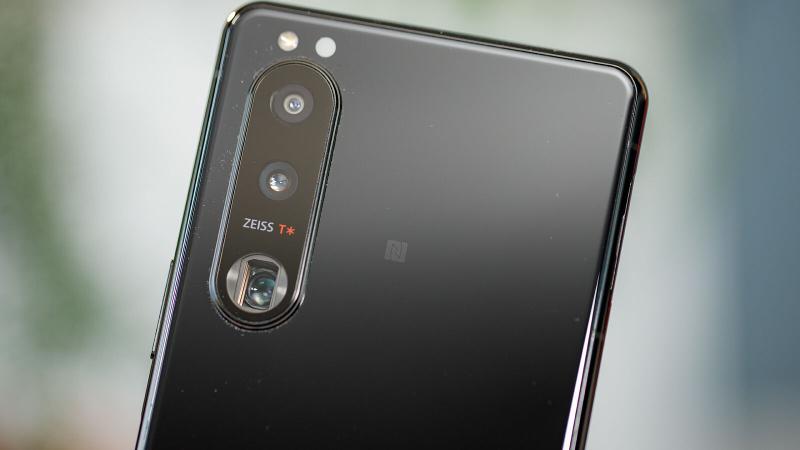
Charging is similarly average. The 30W wired speeds match the likes of the Pixel 6 and slightly beat Samsung’s S21 phones or the new iPhones, but fall far below the fast charging speeds delivered by the likes of OnePlus, Oppo, or Xiaomi – the latter’s recent 11T Pro delivers four times more power at 120W.
Still, there are arguably diminishing returns here. Sony says that the 5 III will get half its charge back in half an hour – an almost exact match for my results, which saw 52% charge back in that time. That’s most of a day’s power in half an hour, which I’m sure is sufficiently speedy for most people.
One big omission – compared to the 1 III – is that there’s no wireless charging at all here, which is a shame given the phone’s price. Even cheaper competitors now offer at least some wireless charging option, even if it’s slow, and I would have liked to see the same here.
Camera
- 12Mp triple rear camera
- Variable telephoto lens – both 2.9x and 4.4x zoom
- Limited low light performance
- Confusing camera apps
The camera on the Xperia 5 III is a funny old beast, with phenomenal hardware let down by so-so software – unless you have the photography prowess to go manual and treat this like a DSLR.
The actual lenses and sensors found on the rear of the phone are the same found in the Xperia 1 III: a 12Mp, f/1.7 main lens with OIS; a 12Mp, f/2.2 ultrawide; and a rather clever 12Mp periscopic telephoto lens that’s capable of shooting both at 2.9x zoom with an f/2.3 aperture, and then moving to 4.4x zoom at f/2.8 – also with OIS.
In good light all of these lenses impress, apart from the familiar problem of slight colour inconsistencies between them – far from a dealbreaker. Colours in general are restrained and mostly true-to-life – if even a touch faded at times – so will appeal if you’re not a fan of the Instagram-ready, heavily saturated aesthetic popular with other brands.
The telephoto is arguably the most impressive, and not only for the added versatility afforded by its ability to change zoom levels. Zoomed in shots are routinely crisp and detailed – helped by the inclusion of optical stabilisation, no doubt – and even handle dynamic range well, which not every zoom lens manages.

It’s low-light where I’m less satisfied with the 5 III, in part because there’s no dedicated night mode. I’ve taken a few great shots to be fair, including concert photos of Caroline Polachek that even came out well from 4.4x zoom – not many phones could handle that.
But I’ve taken just as many nighttime shots that have emerged blurry or lacking detail. Most often you’ll find that light sources are over-exposed and blown out, ruining otherwise solid shots. This is a problem for most phones, to be fair – but flagships from Vivo and Google have made serious headway in fixing this problem. Sony positions itself as a smartphone camera expert, so it does feel like a drawback that the phone lags well behind on this, especially given its price.
The problem stems in part from the fact that Sony intends this to be a smartphone for photographers, not everyday users. Given the company’s camera pedigree you can see why it might take that approach, but it has clear drawbacks.
You can see it in the fact that the strong rear cameras are let down by a weak selfie shooter. This 8Mp camera is low on detail and doesn’t impress on dynamic range either, despite the wide f/2.0 aperture. But serious photographers don’t take selfies, right?
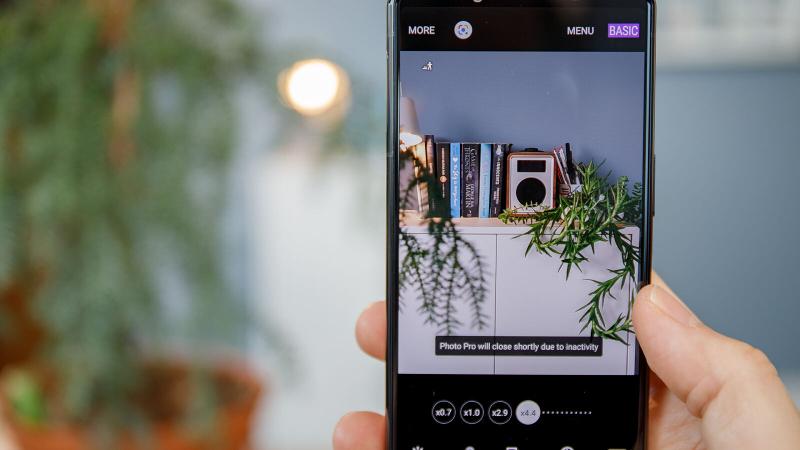
More than that, the evidence is in the app. Sony’s new camera app is modelled closely on the software that runs on its actual cameras, complete with a virtual dial to select your shooting mode. Most people will want to stick with ‘Basic’ – which feels essentially like a standard smartphone camera – while the other modes open up vastly more complicated interfaces for managing ISO, shutter speed, focus, and so on.
It’s not all that unusual to offer a pro experience, and I suspect those who enjoy exploring the more manual side of photography will relish the options here. But it’s a shame that in offering this, Sony has stripped back the regular mode by so much, leaving users with few of the additional shooting modes that are now smartphone staples.
The UI is messy too. When shooting with the rear cameras I can access bokeh effects for portrait shots from a simple slider right next to the timer and flash options. But if I’m taking a selfie, that option isn’t there – instead I have to head to ‘More’ and then select ‘Portrait selfie’. Why?
Things get even more complicated when you switch to video. The main camera app will let you record video in the ‘basic’ mode, but the other modes are all photo-only – not that the app tells you that, instead simply bumping you back to photo mode without a warning. Instead, pro video requires that you open a second app called Cinema Pro that’s only for shooting video, with an entirely different interface.
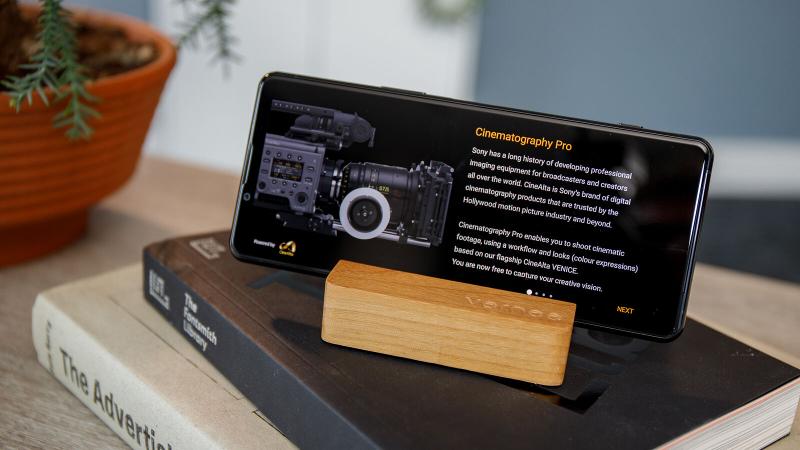
Again, those with the know-how to take advantage will likely love the depth of options here, with an expansive set of options for ISO, shutter speed, manual or auto-focus, and colour…
